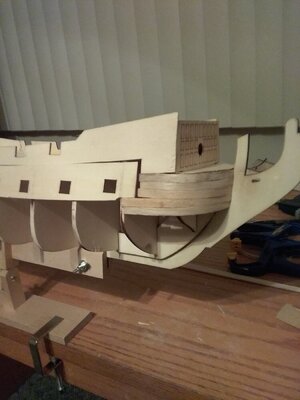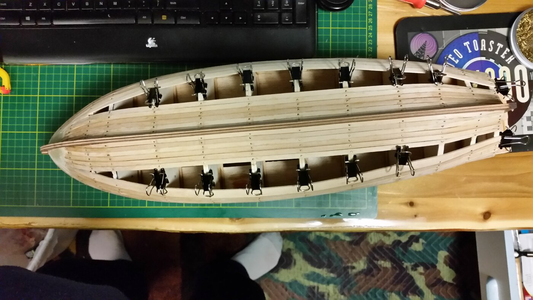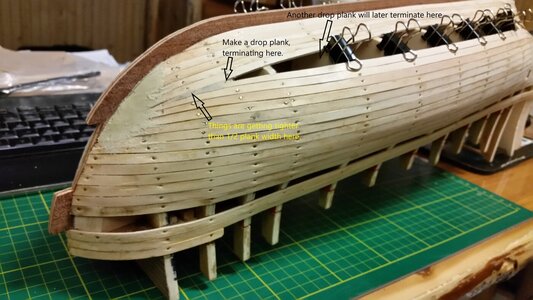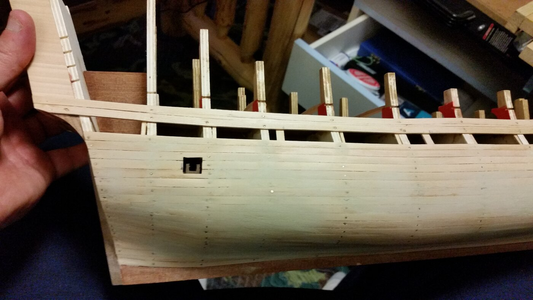First off, for this scale, your planks may be too wide, making it difficult to follow the twist and curve of the bow. Here are the lines your are looking to follow.
View attachment 283702
A plank should never be tapered smaller that 50% of it's original length. When things appear to get tight at the bow, make a drop plank like this. The plank that is cut short is 50% of the full width. The plank that absorbs the short sn of the taper plank is about 75%-80% of its full width. Before you just start tapering planks, get familiar with judging plank width by taking a pencil and DRAW THE PLANK LINES, on the planks, then cut. Cutting planks for me is tricky. I often run off the line and ruin a plank, ESPECIALLY if the knife is dull. I often SAND the edge of the plank by placing it in a desktop vice and sanding to the pencil line. This has saved me much wood and many mistakes.
View attachment 283703
Always make TWO planks at a time, and plank the port and starboard sides at the same time. This allows you to look and check to make sure both sides are symmetrical. You can adjust by making a couple planks a bit thicker on the side that is losing the race toward closing the gap in the hull. Look at the hull of
La Couronne below. Note how planks are started at the gunwale at the top, and also at the garboard strake, at the keel, and planking progresses toward a midpoint at the hardest turn of the curvature of the hull. The strip left unplanked is the line where the gun ports will go.
View attachment 283705
The gap narrows. It is obvious at this point hat drop planks will be needed, mostly at the bow, and a couple at the stern.
View attachment 283706
View attachment 283764
The lines of the planks are harder to see here, because the hull has been sanded, filled, and sanded again several times. Filler fills in flat spots, so the hull curves are never sudden bends, but rather slow and subtle curves. The drop planks at the stern terminate farther from the stern than the drop planks terminate from the bow.
View attachment 283707
View attachment 283708
Really hope this helps! Planking is a skill that terrorized me at first, but with the right instruction, it can be done even by a beginner. Attached below are three tutorials for planking. They use a calculated approach to planking. More than anything, you need PATIENCE to plank a hull. Once you do one, it gets much easier. The nice thing is that the first layer of planks allows you to practice and correct mistakes, which will never show. The final layer is where you have to get it right. By then, you will have the skill to plan and lay each plank, watching how the gap is closed, planning when and where to us drop planks and stealer planks, and keep the planking on both sides of the hull 100% symmetrical. You have to give yourself time to learn.
Watch my favorite tutor and professional modeler, Olha Batchvarov, show you how plank a hull. Note how she makes her drop planks.
Step By Step Model Ship Build : #02 - First layer of planking













